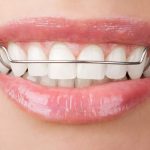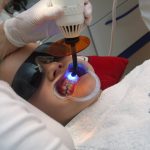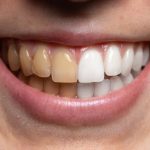Brace Yourself: When Will You See Your Teeth Move with Braces?

Braces are a dental treatment designed to straighten crooked teeth and improve your smile. They are commonly used to address orthodontic issues such as overbites, underbites, and misaligned teeth. If you are considering getting braces, you may be wondering how long it will take to see your teeth move into place. While every case is unique, there are some general timelines that you can expect. The process of moving teeth with braces can be a lengthy one, but the results are well worth the effort. Depending on the severity of your dental problems, you may need to wear braces for anywhere from six months to two years or more. During this time, you will need to visit your orthodontist regularly for adjustments and checkups to ensure that your teeth are moving properly. While the process can be slow, it is important to be patient and trust the process, as the end result will be a beautiful, healthy smile.
Braces play a vital role in dental treatment, especially for those having misaligned or crooked teeth. They are designed to apply constant pressure to the teeth to gradually shift them into the desired position. Braces can correct a variety of dental issues, such as overcrowding, gaps between teeth, and overbites. With proper alignment, braces can also improve the overall appearance of the teeth and enhance facial symmetry. Additionally, braces can also improve the functionality of the teeth by improving bite and reducing the risk of dental problems such as gum disease, tooth decay, and jaw pain. Although braces require commitment and patience, the long-term benefits they offer are invaluable for maintaining good oral health and a beautiful smile.
Braces are a dental treatment that uses brackets, wires, and elastic bands to gradually move teeth into their proper alignment. The brackets are attached to each tooth, and the wires are threaded through the brackets. Over time, the wires are tightened to apply pressure on the teeth, which causes them to shift into the desired position. The elastic bands are used to hold the wire in place and to apply additional pressure to specific teeth. As the teeth move, the bone and tissue surrounding them also gradually adjust to the new position. The length of treatment varies depending on the severity of the misalignment, but patients can expect to see noticeable changes in their teeth within a few months of starting treatment.
Types of Braces
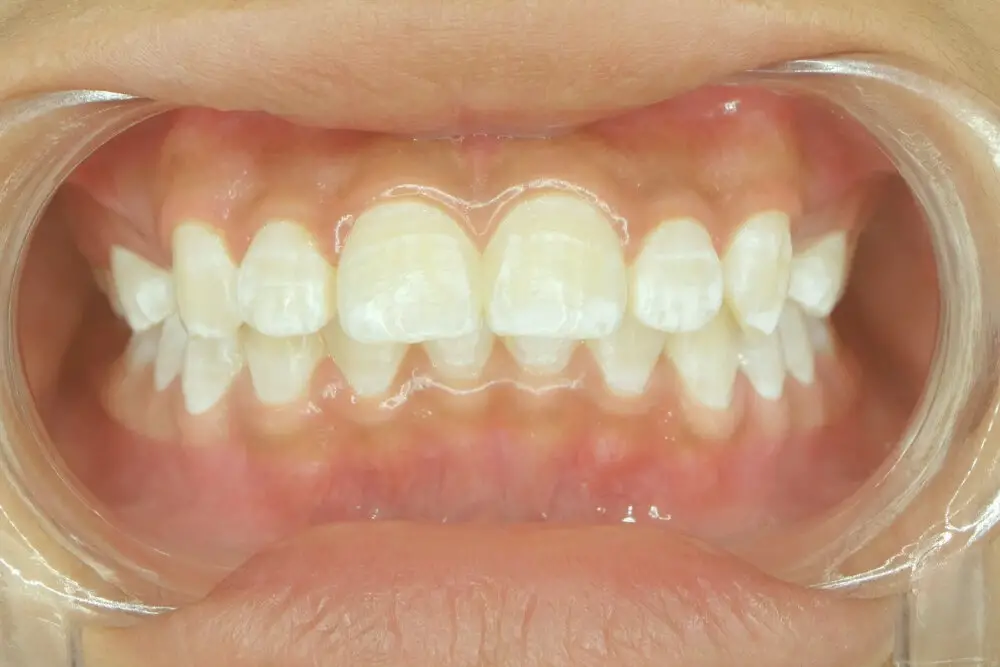
When it comes to orthodontic treatment, braces are the most commonly used tool to align teeth and improve dental health. Braces come in various types, and the choice of which one to use depends on the severity of the case, patient preference, and the orthodontist’s recommendation. The most conventional type of braces is metal braces, which consist of metal brackets attached to the teeth and wires that connect the brackets. These braces are effective in treating complex dental issues and are the most affordable option. Another popular type of braces is ceramic braces, which are similar to metal braces but are made of clear or tooth-colored material, making them less noticeable. They are a good option for patients who want a discreet treatment option but don’t want to opt for Invisalign. Lingual braces are another option that is similar to traditional metal braces but placed behind the teeth, making them virtually invisible. These braces are a good choice for individuals who need extensive orthodontic treatment but want to maintain a professional appearance. However, lingual braces can be more challenging to adjust and maintain proper oral hygiene. Overall, the type of braces used depends on the individual’s needs and the orthodontist’s recommendation.
Traditional metal braces are a popular orthodontic treatment that has been used for decades to correct misaligned teeth and improve bite function. These braces consist of metal brackets that are bonded to the teeth and connected by wires and elastics. While they may not be the most aesthetically pleasing option, they are highly effective and can treat a wide range of dental issues. The treatment time for traditional metal braces varies depending on the severity of the patient’s dental problems, but typically lasts between 18 and 24 months. Despite their reputation for discomfort, modern advances in orthodontic technology and materials have made traditional metal braces more comfortable than ever before.
Ceramic braces are a popular alternative to traditional metal braces. They are made of clear or tooth-colored materials that blend in with the teeth, making them less noticeable. Ceramic braces work in the same way as metal braces, using brackets and wires to gradually shift teeth into the desired position. They are a great option for those who are concerned about the appearance of their braces but still want the effectiveness of traditional braces. However, it is important to note that ceramic braces can be more fragile than metal braces and may require more careful maintenance to prevent damage. Your orthodontist can help you determine if ceramic braces are the right choice for you.
Lingual braces are a type of orthodontic treatment that are installed behind the teeth, making them invisible from the front. This method is particularly suitable for people who are concerned about the appearance of traditional braces, as lingual braces are not apparent when talking or smiling. The braces are customized to fit the shape of the patient’s teeth and are attached using a special bonding agent. Due to their positioning, lingual braces can be more difficult to clean and may cause more discomfort initially compared to traditional braces. However, they can be an excellent option for individuals looking for a discreet way to straighten their teeth.
Invisalign is a type of orthodontic treatment that involves wearing a series of clear, removable aligners that gradually shift your teeth into their desired position. Unlike traditional metal braces, Invisalign aligners are virtually invisible, making them an attractive option for people who don’t want to draw attention to their orthodontic treatment. Invisalign aligners are custom-made for each patient and are worn for 20-22 hours a day, with each set of aligners worn for approximately two weeks. Invisalign treatment is typically faster and more comfortable than traditional braces, and the aligners can be removed for eating, brushing, and flossing, making it easier to maintain good oral hygiene. Overall, Invisalign is a great option for people who want to straighten their teeth without the hassle and appearance of traditional braces.
Factors Affecting the Speed of Teeth Movement

The speed of teeth movement is influenced by various factors. Firstly, the complexity of the dental issue plays an important role in determining the speed of the teeth movement. Simple cases, such as minor spacing or crowding, may take a shorter time to correct compared to more complex cases like severe malocclusion or jaw misalignment. The severity of the condition, the age of the patient, and the quality of the bone and surrounding tissues can also affect the speed of teeth movement. Furthermore, the type of orthodontic appliance used, whether it is traditional metal braces, clear aligners, or lingual braces, can also affect the speed of the teeth movement. Clear aligners, for example, may require more frequent changes and adjustments, resulting in a faster treatment time. Another factor that affects the speed of teeth movement is patient compliance with the orthodontic treatment plan. Patients who follow their orthodontist’s instructions, including wearing their appliances as directed, avoiding certain foods, and attending regular appointments, are more likely to experience faster results. Poor compliance can result in delayed treatment times and even setbacks in the progress of the treatment. Other lifestyle factors such as smoking, poor nutrition, and inadequate oral hygiene can also impact the speed of teeth movement. By adopting healthy habits and following the orthodontist’s guidance, patients can help ensure an efficient and successful orthodontic treatment.
Age is one of the crucial factors that affect the effectiveness of orthodontic treatments such as braces. Generally, the ideal time to start wearing braces is during teenage years when the teeth and jaw are still developing. At this stage, the teeth are more responsive to the pressure exerted by the braces, and the treatment duration is shorter. However, this does not mean that adults cannot wear braces. In fact, with advancements in orthodontic technology, adult braces are becoming increasingly popular and effective. Nevertheless, the treatment duration may be longer, and some dental issues such as gum disease and bone loss may hinder the success of the treatment. Therefore, it is essential to consult with an orthodontist to determine the best treatment option based on age, dental needs, and overall health.
Dental issues can range from mild to severe, but all require attention and treatment to maintain oral health. Mild issues like tooth sensitivity or minor cavities can often be resolved with simple treatments, while more severe issues like periodontitis or impacted teeth require more extensive and invasive procedures. Neglecting dental issues can lead to further complications, such as infection or even tooth loss, and can also impact overall health. It is important to regularly visit a dentist for checkups and address any dental issues promptly to prevent them from becoming more severe. Braces can also play a role in addressing dental issues, such as misaligned teeth, and can improve both oral health and appearance.
Compliance with the treatment plan is crucial for a successful orthodontic treatment. Patients who follow the instructions and recommendations of their orthodontist are more likely to achieve their desired result. This includes proper oral hygiene, avoiding hard and sticky foods, attending scheduled appointments, and wearing their braces or aligners as instructed. Failure to comply with the treatment plan can result in prolonged treatment time, unsatisfactory results, and even potential damage to the teeth and gums. Therefore, it is essential for patients to understand the importance of compliance and to be committed to their treatment plan in order to achieve the best possible outcome.
Braces are orthodontic devices that are used to straighten teeth, correct bite problems, and improve dental health. There are several types of braces available, including traditional metal braces, ceramic braces, lingual braces, and clear aligners. Traditional metal braces are the most common type of braces and are made of stainless steel brackets and wires. Ceramic braces are similar to metal braces but use clear or tooth-colored brackets to blend in with the teeth. Lingual braces are placed on the back of the teeth, making them virtually invisible. Clear aligners are removable trays made of clear plastic that gradually move teeth into place. Each type of brace has its own advantages and disadvantages, and the best type for a patient will depend on their individual needs and preferences.
Timeline of Teeth Movement with Braces

Orthodontic treatment with braces is an effective way to straighten crooked teeth, correct bite issues, and improve overall dental health. However, patients often wonder how long it will take to see results and when their teeth will start moving. The timeline of teeth movement with braces varies depending on several factors, including the severity of the dental issue, the type of braces used, and the patient’s compliance with treatment. Typically, the first few weeks of orthodontic treatment involve getting used to wearing braces and experiencing some discomfort as the teeth start to move. During the first few months, the teeth will gradually shift into their desired positions. Patients may notice visible changes in their smile within the first few weeks, but it can take several months or even up to a year for the full results to become apparent. As the teeth continue to move, patients will need to visit their orthodontist for regular adjustments to ensure that the braces are properly aligned and the teeth are moving in the right direction. Overall, the timeline of teeth movement with braces can range from several months to a few years, depending on the complexity of the case.
The early stages of orthodontic treatment involve the initial consultation with an orthodontist and the placement of braces on the teeth. During the consultation, the orthodontist will examine the patient’s teeth and create a treatment plan tailored to their specific needs. Once the braces are placed, the patient may experience some discomfort as their teeth begin to shift. It is important to follow the orthodontist’s instructions for proper care and maintenance of the braces to ensure optimal results. In the early stages of treatment, patients should avoid hard, sticky, and sugary foods to prevent damage to the braces. Regular appointments with the orthodontist will be necessary to monitor progress and make any necessary adjustments to the braces. While the early stages of treatment may be uncomfortable, the end result of a beautiful, straight smile is well worth the effort.
The first few months of wearing braces can be daunting, as you adjust to the new sensation in your mouth and the initial discomfort it may cause. However, it’s important to remember that this is a temporary phase, and the end result will be worth it. During this period, you may experience some soreness or tenderness in your teeth and gums, and it may take some time to become accustomed to the braces themselves. Additionally, you’ll need to be extra diligent about your oral hygiene routine, as food particles can easily become trapped in your braces and cause problems. But with patience, dedication, and regular check-ins with your orthodontist, you’ll be on your way to a straighter, healthier smile in no time.
Midtreatment is a crucial phase during orthodontic treatment, where the braces begin to shift the teeth into their desired position. It can be an exciting time for patients as they start to see visible changes in their smile. However, it’s important to note that midtreatment can also be a challenging period as the teeth may feel sore and uncomfortable due to the pressure being exerted by the braces. Patients may also need to adjust their eating habits and oral hygiene routines to avoid damaging the braces. It’s essential to follow the orthodontist’s instructions closely during midtreatment to ensure the best possible outcome for the treatment.
The final stages of treatment for braces involve the removal of the brackets and wires. This process can be done quickly and painlessly, and patients may feel a sense of relief once their braces are removed. After removal, a retainer will be given to the patient to ensure that their teeth maintain their new alignment. It is essential to follow the orthodontist’s instructions carefully during this stage of treatment to ensure that the teeth do not shift back to their original position. Patients should also continue to maintain good oral hygiene habits to avoid any complications or relapse.
Tips for Faster and More Effective Teeth Movement
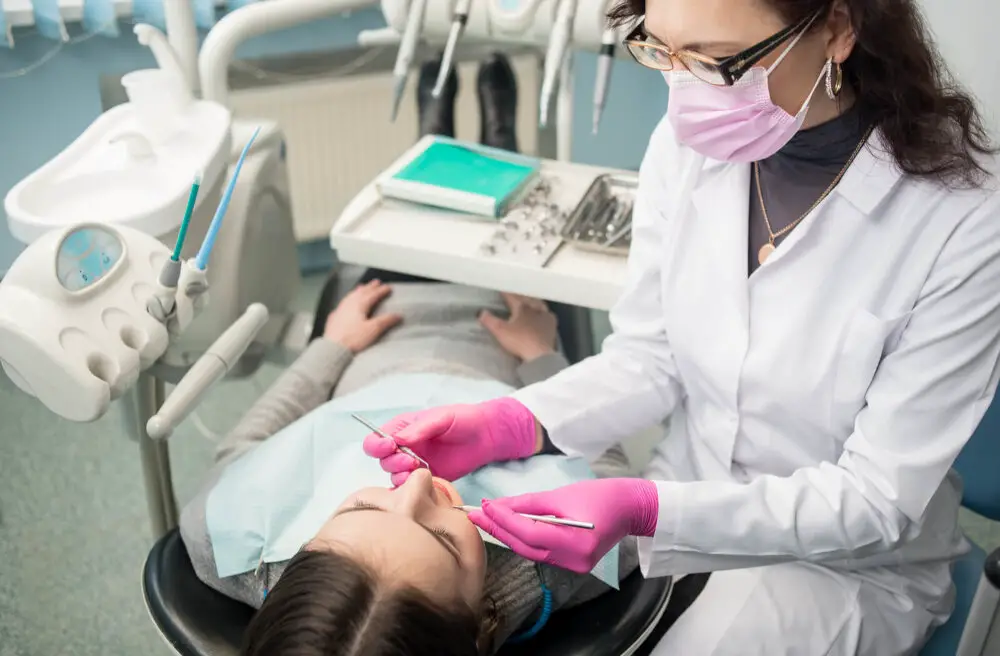
When it comes to having braces, most people want to see results as quickly as possible. While the length of time it takes to see teeth movement varies from person to person, there are some tips that can help speed up the process. One important factor is maintaining good oral hygiene. Keeping your teeth and gums healthy can help prevent any delays caused by tooth decay or gum disease. This means brushing and flossing regularly, using mouthwash, and visiting your dentist for check-ups. It’s also important to avoid foods that can damage your braces, such as hard or sticky foods, and to wear any additional appliances, such as rubber bands, as instructed by your orthodontist. Another tip for faster and more effective teeth movement is to follow your orthodontist’s instructions closely. This includes attending all scheduled appointments, wearing your braces for the recommended amount of time each day, and avoiding any activities that could damage your braces, such as playing contact sports without a mouthguard. It’s also important to communicate with your orthodontist if you have any concerns or questions about your treatment. By following these tips, you can help ensure that your teeth move as quickly and effectively as possible, and that you achieve the smile you’ve been dreaming of.
Maintaining good oral hygiene is crucial when wearing braces. Braces can make it more challenging to clean teeth thoroughly, leading to the accumulation of plaque, which can cause dental problems like cavities and gum disease. It’s essential to brush at least twice a day with fluoride toothpaste, floss regularly, and use a mouthwash to kill bacteria. Avoiding sugary and starchy foods can also help prevent plaque buildup. Orthodontic wax can be used to cover sharp wires or brackets that may irritate the mouth. Regular dental checkups and cleanings are also essential to ensure that the teeth and gums remain healthy throughout the orthodontic treatment. With proper oral hygiene, patients can achieve a beautiful, healthy smile at the end of their orthodontic journey.
Attending regular checkups and appointments is crucial when it comes to wearing braces. Orthodontic treatment is a long process that requires constant monitoring and adjustment by a qualified professional. Regular checkups ensure that any issues or complications are detected early and treated promptly. These appointments also provide an opportunity for the orthodontist to assess the progress of the treatment and make necessary adjustments to the braces. Skipping appointments or neglecting regular checkups can result in prolonged treatment time and potential damage to the teeth and gums. Therefore, it is essential to prioritize attending appointments and following the orthodontist’s recommendations to achieve the best possible results.
It is crucial to follow the treatment plan and instructions provided by your orthodontist when undergoing braces treatment. The treatment plan is tailored to your specific dental needs and goals, and not following it can delay the progress of your treatment. Your orthodontist will give you specific instructions on how to care for your braces and teeth, including proper brushing and flossing techniques, what foods to avoid, and how often to attend appointments. It is essential to adhere to these instructions to ensure that your teeth move into the desired position efficiently and effectively. By following your treatment plan and instructions, you can achieve a straighter, healthier smile in the shortest possible time.
When wearing braces, it’s important to avoid hard, sticky, and sugary foods to prevent damage to the brackets and wires. Hard foods like nuts or hard candies can break or loosen the brackets, while sticky foods like caramel or chewing gum can get stuck in the wires and make it difficult to clean your teeth. Sugary foods also increase the risk of developing cavities and tooth decay, which can slow down the progress of your orthodontic treatment. Instead, opt for softer, healthier foods like fruits, vegetables, and lean proteins. Remember, taking care of your braces means taking care of your teeth, and making smart food choices is a crucial part of that.
When undergoing orthodontic treatment with braces, it is crucial to follow the instructions of your orthodontist regarding the use of rubber bands and other accessories. Rubber bands are often used to apply additional pressure to specific teeth or to correct an overbite or underbite. Failing to wear rubber bands as directed can prolong treatment time or even result in the need for additional procedures. Other accessories, such as headgear or palate expanders, may also be used to correct bite issues. It is important to wear these accessories as directed by your orthodontist to ensure the best possible outcome for your treatment. While it may be tempting to skip wearing rubber bands or other accessories, following your orthodontist’s instructions will ultimately lead to a straighter, healthier smile.
Patience is a virtue that is essential when it comes to getting braces. The process of straightening teeth with braces is a gradual one, and it can take anywhere from a few months to a few years to see the desired results. It is important to remember that every individual’s case is unique, and the rate of tooth movement varies from person to person. It’s easy to get discouraged when the progress is slow, but it’s crucial to trust the process and continue to follow the orthodontist’s instructions. It’s also important to maintain good oral hygiene habits and attend regular appointments to ensure that the braces are working as they should. With patience and diligence, the end result will be a beautiful, healthy smile that is worth the wait.
Teeth movement is a complex process that depends on various factors unique to each patient. The timeline for tooth movement with braces can vary widely, depending on factors such as the severity of the dental issue, the age of the patient, the type of braces used, and the patient’s commitment to treatment. Patients with more severe dental problems or older patients may require longer treatment times. Additionally, the type of braces used can also affect the timeline, with traditional braces typically requiring longer treatment times than newer options like clear aligners. Ultimately, the best way to determine your treatment timeline is to consult with an experienced orthodontist who can evaluate your dental needs and develop a customized treatment plan.
Following a treatment plan and instructions is essential to speed up the process of teeth movement with braces. Patients should attend all scheduled appointments, as orthodontists will make adjustments to the braces that will help align teeth faster. It is also crucial to maintain excellent oral hygiene, including brushing and flossing regularly to prevent any potential complications that could hinder progress. Additionally, patients should avoid hard or sticky foods that could damage the braces, as this can delay the treatment process. By following these guidelines, patients can ensure they see their teeth move with braces as quickly and effectively as possible.
Conclusion
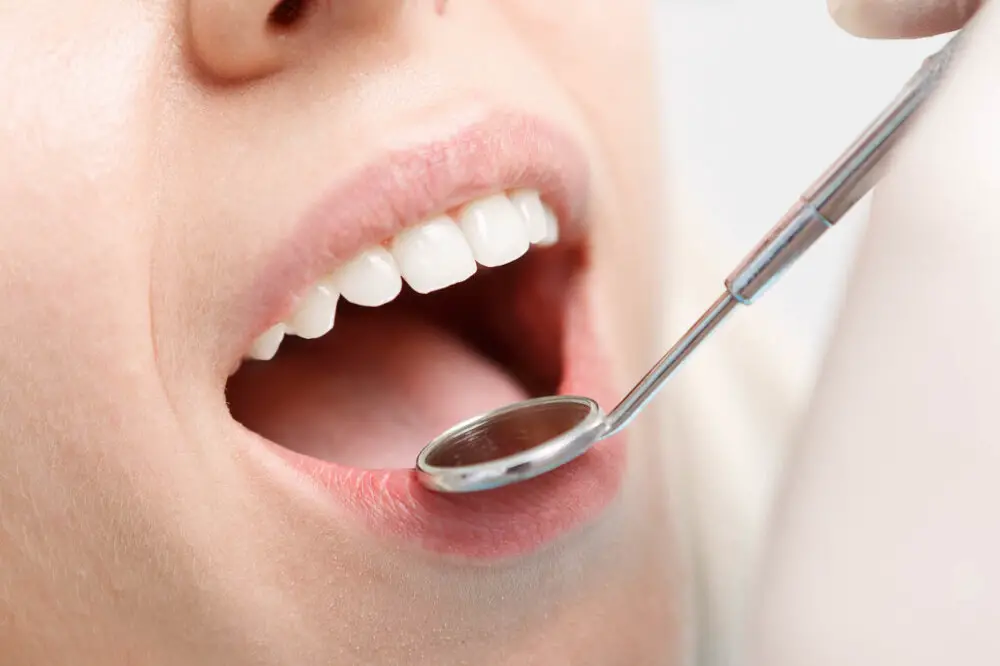
In conclusion, braces are a powerful tool for correcting dental problems and ultimately enhancing your smile. While the process of seeing your teeth move with braces can vary depending on the individual, the end result is well worth the time and effort. It is important to maintain good oral hygiene habits and attend regular appointments with your orthodontist to ensure that your treatment progresses smoothly and efficiently. With patience and perseverance, you can achieve the beautiful, healthy smile that you desire. So, brace yourself for the journey ahead and look forward to a brighter, more confident future!



